Discover what Australia solar shoppers were wanting in an electricity-bill busting solar power system package during October 2022.
Solar Power System Size Selection
Where 3-5 kW, 5-10 kW, 10-15 kW, 15-20 kW, 20+ kW and “Fill Roof” options were shown on SolarQuotes’ quoting form and a capacity selected, just over 75% chose 5 – 10kW in October; up a little on September.
22% were looking for either bigger systems or to fill their rooftops with solar panels (whatever capacity that may be).
So, how much solar should you install? Check out SQ Founder Finn’s solar power system size advice.
Buying A System When?
Many Australians using the SQ service in October were keen to jump on the solar energy bandwagon as soon as possible. 24% were ready to purchase immediately compared to around 23% in September and 22% in July and August. A further 32% were intending to buy a solar power system within 4 weeks.
Looking For A Good Balance Of Price And Quality
Again in October, just under 12% wanted a high-end system (most expensive) and 81% a system offering a good balance of price and quality. The balance were interested in a good budget system.
To get an idea of current price ranges for fully-installed good quality systems, view our solar panel costs page. For historical average pricing on systems of various sizes (and quality) see the SolarQuotes Solar Price Index.
Will That Be Cash Or Finance?
Using finance for solar panels – if approached thoughtfully – can be a good way to get your rooftop real estate working for you without any or minimal up-front cost. Your repayments can be less than the electricity bill savings the system will provide on average, and then after the repayment period the savings are all yours.
In October, around 9% of those submitting quote requests indicated they wanted finance, 41 per cent were cash buyers and the remainder wanted to review options for both. These results were similar to September.
Panel Optimisation Tech
The most common forms of Panel Level Optimisation (PLO) or Module Level Power Electronics (MLPE) are optimisers and microinverters. These devices can help squeeze the most out of each panel, enable more design flexibility for complex rooftops and provide panel level monitoring.
16% of Australian solar shoppers expressed an interest in learning more about these options during October, down on September and August’s ~18%
Advanced Solar Monitoring Options
For something to be managed effectively, it must be measured. Advanced solar monitoring goes beyond the usual power-production-only reporting offered by most inverters and reports on mains grid and solar energy consumption in real-time. Advanced monitoring can also provide a heads-up when something isn’t quite right with a system before it becomes a major problem.
In October, a little more than 35% registered their interest in advanced (aka consumption) monitoring, just a tad lower than September and August (~36%)
Getting Ready For Batteries?
If you’re not quite ready to install a home battery, the good news is AC or DC coupling means batteries can be retrofitted to just about any solar power system. But it’s good to flag with a prospective installer your future energy storage intentions, as this can assist with solar system design.
Interest in a battery-ready system was nudging towards the 6% mark in October.
Solar + Batteries From The Get-Go
There was growing interest in having a home battery installed at the same time as a solar power system – close to 22% compared to a touch over 20% in September and August.
Well-installed quality home batteries are not cheap. If you’re considering a residential energy storage investment, don’t go in blind. Read SolarQuotes Founder Finn Peacock’s “101” guides to understanding, buying and owning a solar battery, and also discover the top mistakes home battery buyers make (and how to avoid them).
Envisioned Primary Battery Use
Where a home battery is to be installed at the same time as solar panels; the main applications noted were:
- Backup: 5% – same as September
- Minimising grid electricity use: 37% – same as September
- Both purposes: 58% – same as September
Power Bills Pre-Solar Panels
49% reported paying $500 to $1,000 a quarter on average for mains electricity in October, down a little on September and August’s 50%. But there was a jump in average electricity bills of more than $1,000 a quarter – up from 11% to just north of 13%. $1,000+ quarterly electricity bills on average for households without solar panels will likely be even more commonplace as more electricity price rises and the summer air-conditioning season kick in.
About The auSSII Report
This report draws on details provided by the thousands of Australians who request quotes from SolarQuotes’ network of carefully pre-vetted installers each month.
Eager Solar Buyers Looking For Great Installers
If you run a great solar business with a focus on quality all round and good value, we have eager solar buyers looking for quotes. Discover more about getting solar sales leads from SQ.
Republishing auSSII Report Content
If you wish to reproduce content from auSSII reports, please ensure SolarQuotes is attributed as the source and include a link to the page from which it is reproduced.

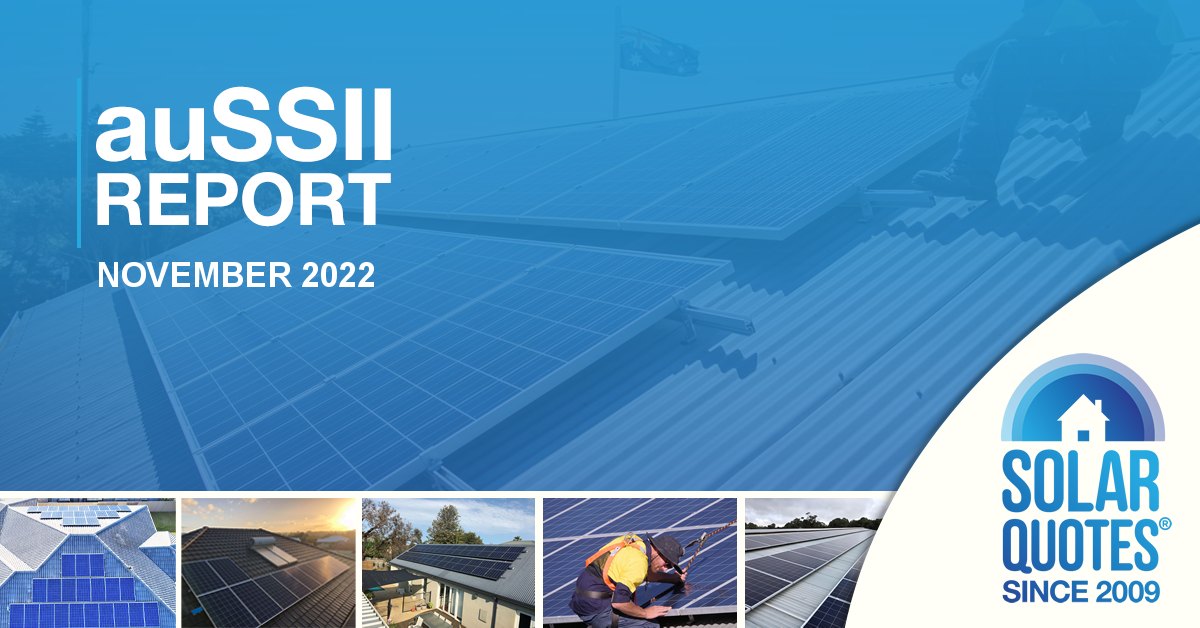
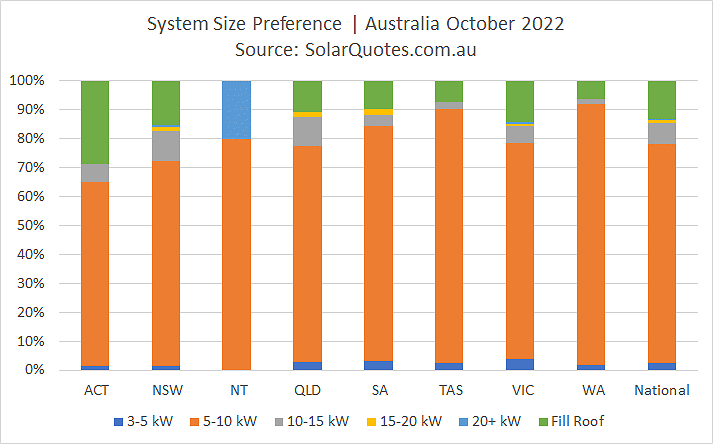
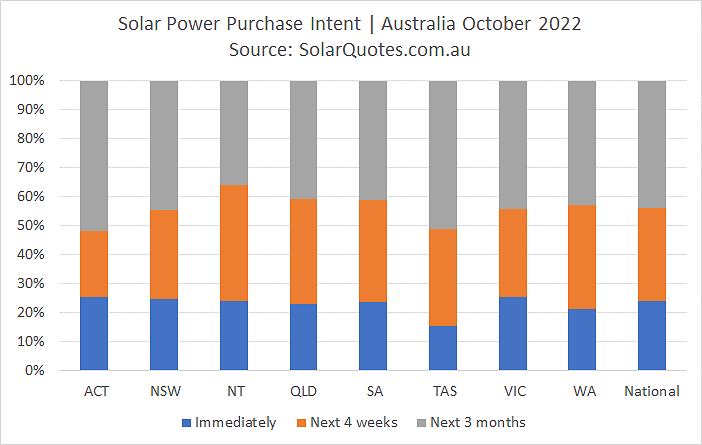
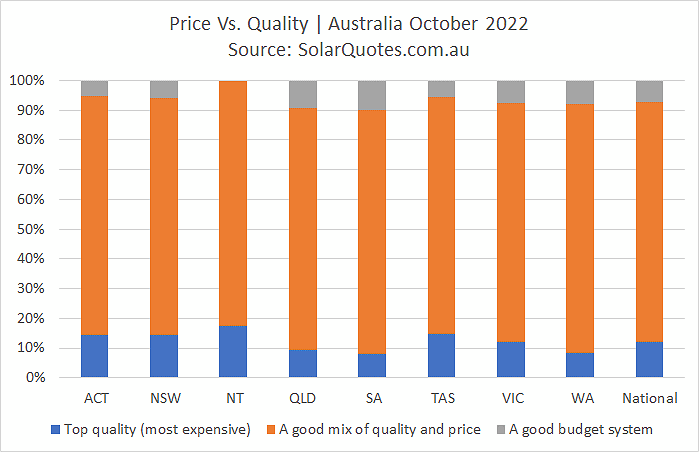
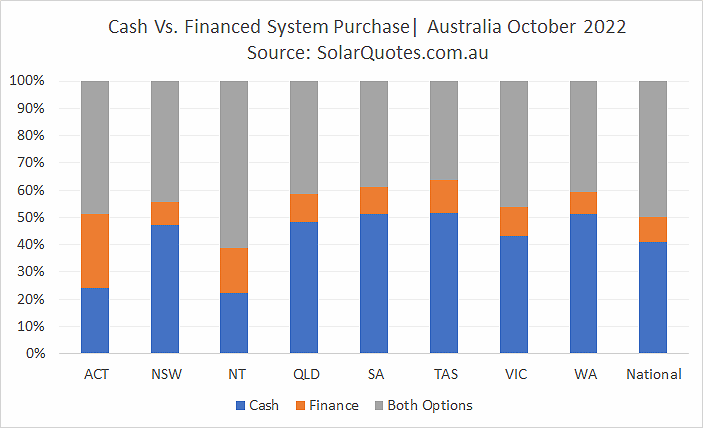
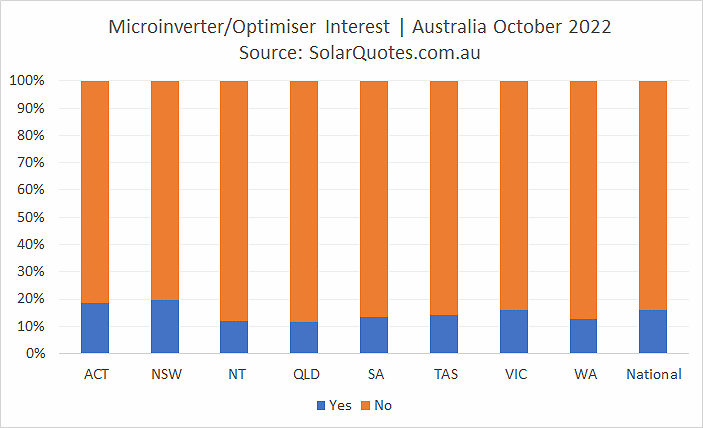
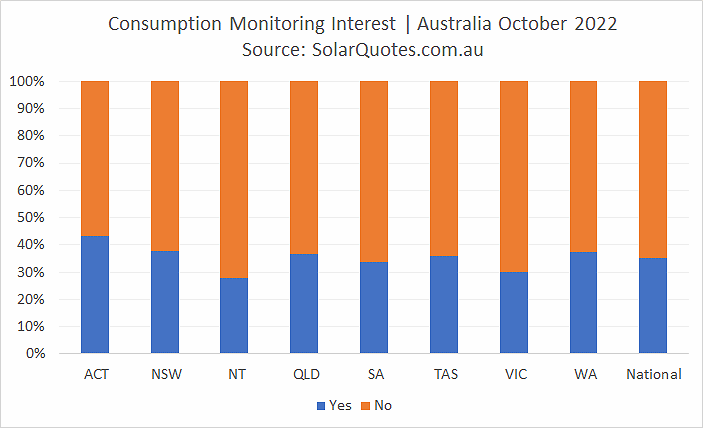
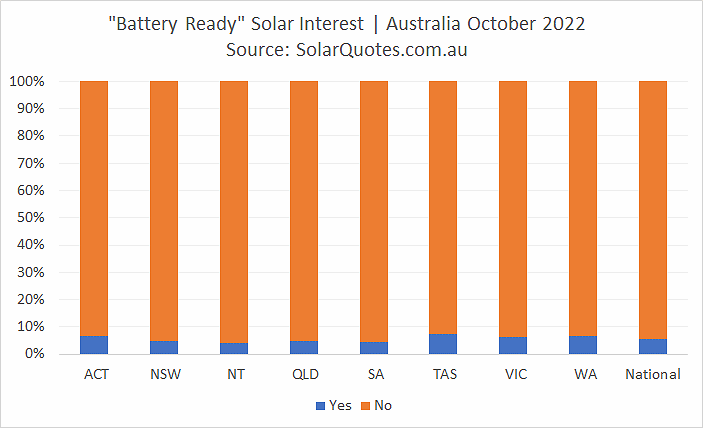
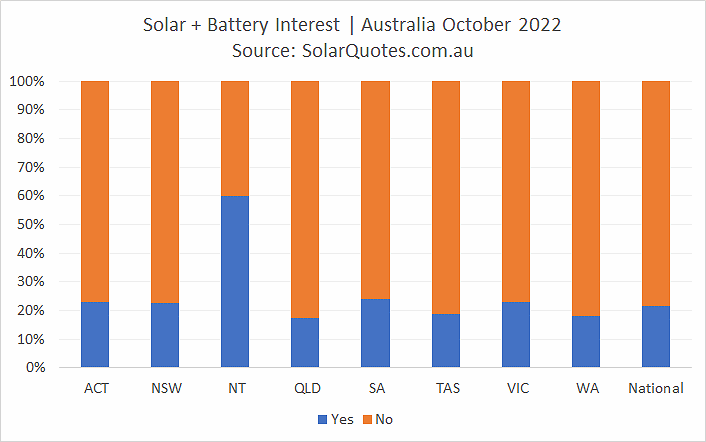
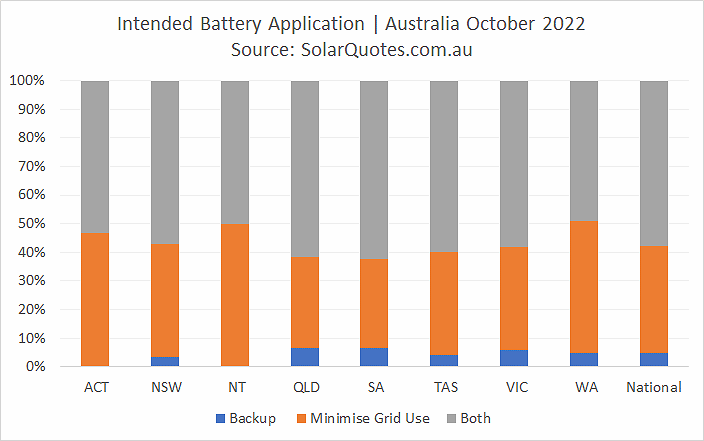
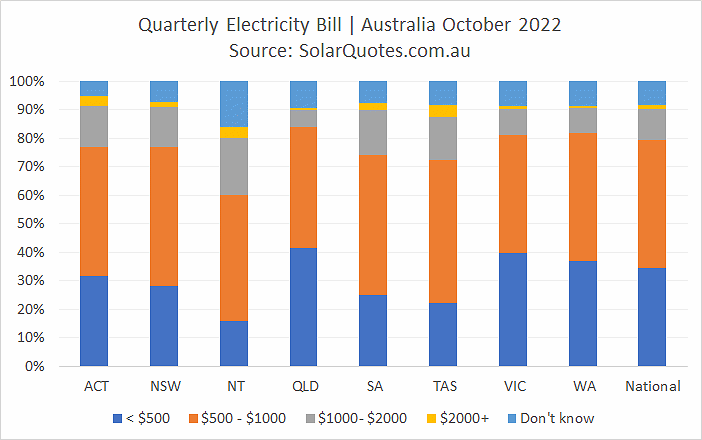
 RSS - Posts
RSS - Posts



I see that Toyota are now offering an alternative to Tesla’s home battery but only in Japan at the present.
The specification looks appealing but I would appreciate any comments.
Regards
Bob
I was introduced to Solar PV in 1942 by my Electrical Engineer father using a modified Selenium Rectifier as the absorber.
He was grooming me to be an engineer in the trade. I was 7.
I began experimenting with Blue Silicon panels and bought my first 2 watt 12V panel from Dick Smith’s Car Radio store in Gore hill in 1966 for $50.00. It is still in my experimental system and still outputs 2 watts.
I was Senior Electrical Inspector Licensing & Safety then and I was warned by my supervisor not to waste my time with Solar experiments because “electricity is cheap and there are many new Power Stations coming on-line and we will never need Solar Energy”. I unfortunately heeded his warning and am stuck now with an experiment that yields about 130 watts maximum.